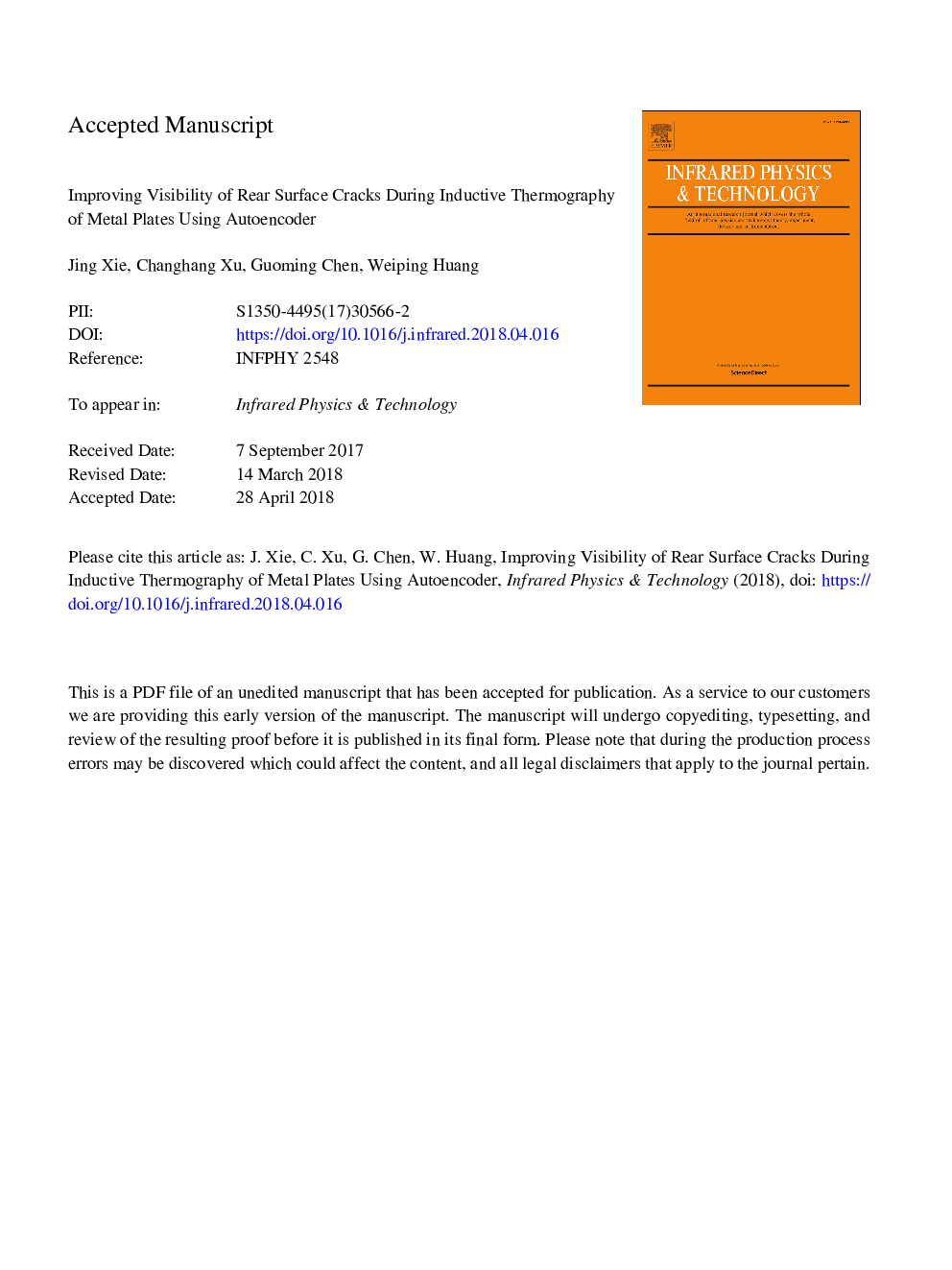| Article ID | Journal | Published Year | Pages | File Type |
|---|---|---|---|---|
| 8145750 | Infrared Physics & Technology | 2018 | 20 Pages |
Abstract
Inductive thermography is one kind of infrared thermography (IRT) technique, which is effective in detection of front surface cracks in metal plates. However, rear surface cracks are usually missed due to their weak indications during inductive thermography. Here we propose a novel approach (AET: AE Thermography) to improve the visibility of rear surface cracks during inductive thermography by employing the Autoencoder (AE) algorithm, which is an important block to construct deep learning architectures. We construct an integrated framework for processing the raw inspection data of inductive thermography using the AE algorithm. Through this framework, underlying features of rear surface cracks are efficiently extracted and new clearer images are constructed. Experiments of inductive thermography were conducted on steel specimens to verify the efficacy of the proposed approach. We visually compare the raw thermograms, the empirical orthogonal functions (EOFs) of the prominent component thermography (PCT) technique and the results of AET. We further quantitatively evaluated AET by calculating crack contrast and signal-to-noise ratio (SNR). The results demonstrate that the proposed AET approach can remarkably improve the visibility of rear surface cracks and then improve the capability of inductive thermography in detecting rear surface cracks in metal plates.
Keywords
Related Topics
Physical Sciences and Engineering
Physics and Astronomy
Atomic and Molecular Physics, and Optics
Authors
Jing Xie, Changhang Xu, Guoming Chen, Weiping Huang,
